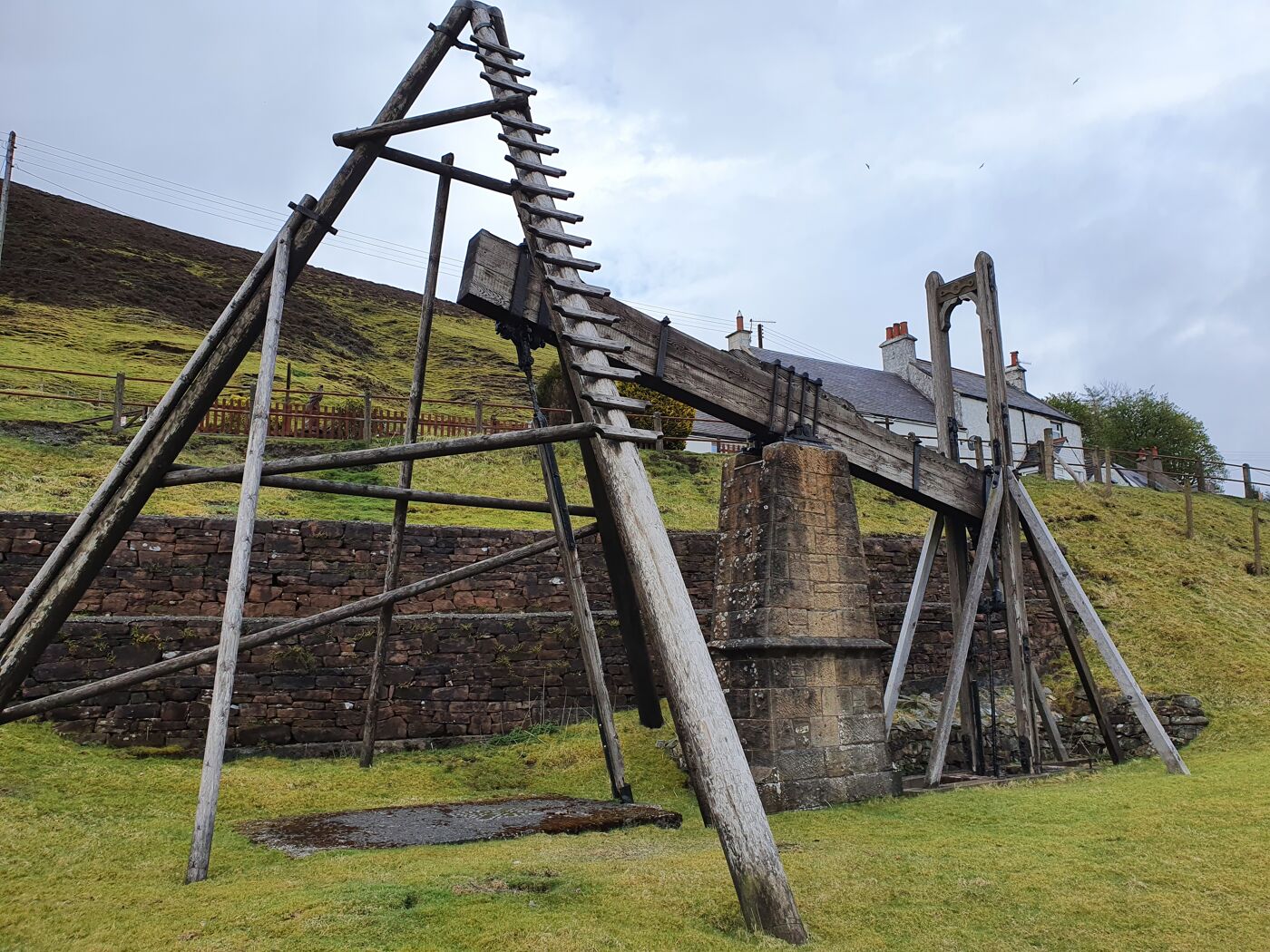
Navigation
- About the research project
- For heritage sites and museums
- For filmmakers
- Case study: Food With a View
- Case study:A Taste of the Outer Hebrides
- Case study: Wanlockhead Museum of Lead Mining
- Case study: Whithorn Trust
- Case study: Auchindrain Township
- Case study: St Giles Cathedral
- Workshop: Scottish Community Tourism (SCOTO) – Discover The Metaverse Buzz
- Workshop: Scottish Community Tourism (SCOTO) – Visual Engagement on Social Media
About the research project
This project aims to reshape engagement with a ‘digital tourist’ for the Scottish Tourism and Hospitality Sectors.
In one “strand” of the project, we focus on VR marketing for tourism and heritage sites. We work with the local filmmakers to enable their “entry” into the VR production market. We develop and test VR content for use on-site or off-site for 3 entities: Wanlockhead museum, Whithorn trust, and Auchindrain township. The project was originally developed as a Covid-19 response and is supported via the ESRC grants (IAA and ABC). We anticipate that this project will have economic and societal impact through: (1) Allowing local filmmakers to enter this new niche market and develop mutually beneficial collaborations with the tourism sites; (2) Allowing tourism and heritage sites to grow visitor awareness and digital engagement and enhance visitor experience on site (therefore assisting in preserving and promoting these culturally significant sites); (3) Allowing visitors with limited mobility to experience heritage sites in a new, engaging way, impossible without the VR technology.
In the other “strand” of the project (supported by ESRC ABC grant), the focus is on the hospitality sector.
The project of the Outer Hebrides involves restaurants and food outlets located on the isles of the Outer Hebrides. The aim of the plan is to enhance the visitors’ engagement which was their urgent need as a response to the COVID19 crisis. That plan involved different aspects, first a new overarching branding for the food outlets on the isles of the Outer Hebrides to help raise the awareness of the visitors, make their experience on the isles an unforgettable one, and of course make the digital engagement more inclusive and beneficial for all the outlets. Accordingly, a new brand logo was created ‘Food with a view’ then that was used by all the outlets and as a part of a social media campaign which is currently running and doing very well (pictures examples I sent you: digital postcard campaign, selfie board, a contest to win an authentic Outer Hebrides product, and the social media banner). The hashtags and recent photos (see attached) show that visitors started to get more engaged with the outlets and the contests too. On social media, the hashtag is used by both the owners of the outlets and the main page of the Outer Hebrides as well as the visitors.
For heritage sites and museums
Please read our privacy notice here before proceeding.
In this section non-profit organisations can find documentation to support them in their quest to incorporate VR material.
Social media guidelines
We have prepared guidelines on how to best use some of the most popular social media platforms as a museum or non-profit organisation:
- Twitter guidelines for museums and non-profit organisations
- Facebook guidelines for museums and non-profit organisations
- Instagram guidelines for museums and non-profit organisations
VR production documentation
VR instructional poster
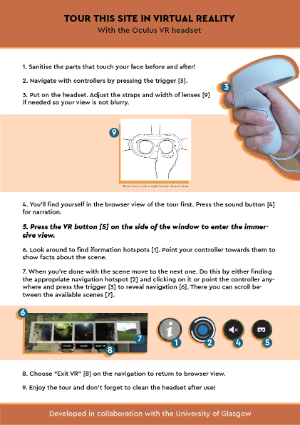
- Adobe pdf file of poster
- If you do not have access to editing software consider using this Low-tech editable poster
For filmmakers
In this section, filmmakers can find documentation to support them in their quest to incorporate VR materials
VR filmmaking for Scottish tourism industry - a panel
Case study: Food With a View
The project of the Outer Hebrides involves food trucks & restaurants located on the isles of the Outer Hebrides.
The challenge
Given restrictions on the food sector, the range of food options is reduced and the mobile food vans and informal eateries down the islands have a more important role to play. It is important to align their offer with visitors’ expectations to maintain high-satisfaction ratings from visitors, given the importance of food as part of a holiday. This also links to elements of the local tourism strategy to emphasise the quality of local produce such as seafood. There is a need to (1) reshape marketing strategies, take advantage of the opportunity created by COVID19 privileging outdoor eating, (2) brand repositioning of the area into a type of island scenery food and (3) enhancing customer engagement strategies and social media promotion practices.
The solution
To enhance the visitors’ engagement which was their urgent need as a response to the COVID19 crisis. That plan involved different aspects, branding aspect -new overarching branding for the food outlets and restaurants on the isles of the Outer Hebrides to help raise the awareness of the visitors, make their experience on the isles an unforgettable one. Making the digital engagement more inclusive and beneficial for all restaurants and food outlets on the isles. Enhance social media engagement practices. Accordingly, a new brand was created ‘Food with a view’ and became a membership trail and helped to cross promotion offline such as selfie boards, food & drinks events, the Hebridean Baker event and via social media campaigns (see pictures).
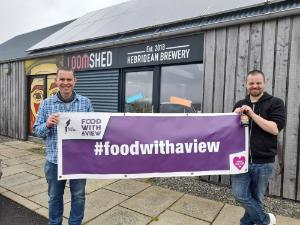
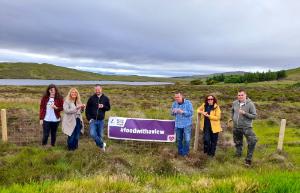
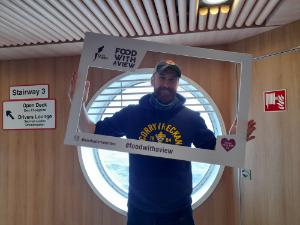
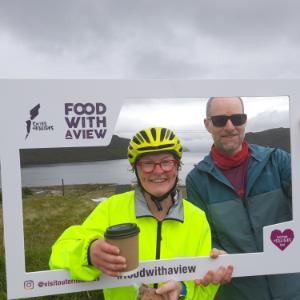
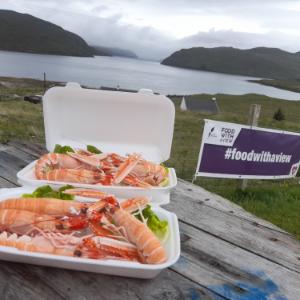
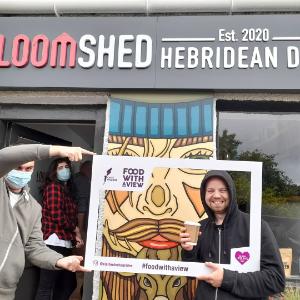
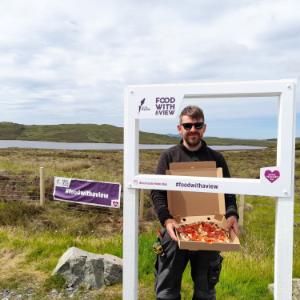
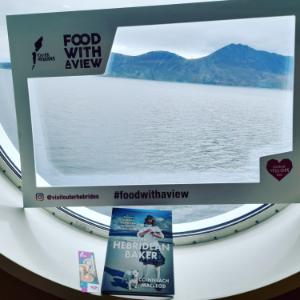
Change in Practice
Change in practice for Outer Hebrides Tourism Community evidenced in applying new approaches to their branding, engagement, and outreach. Change in the engagement of their customers is evidenced in the reach of the social media campaigns: Facebook: over the main duration of the social media campaign started Apr 2020 to Sept 2020 – over 40K while at the same period without the campaign was less than 20K. Instagram: 13K campaign tags and 75K reach which is even more than double the analytics before the campaign.
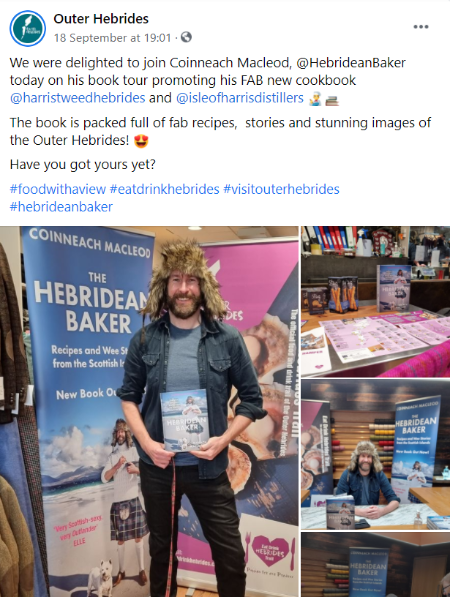
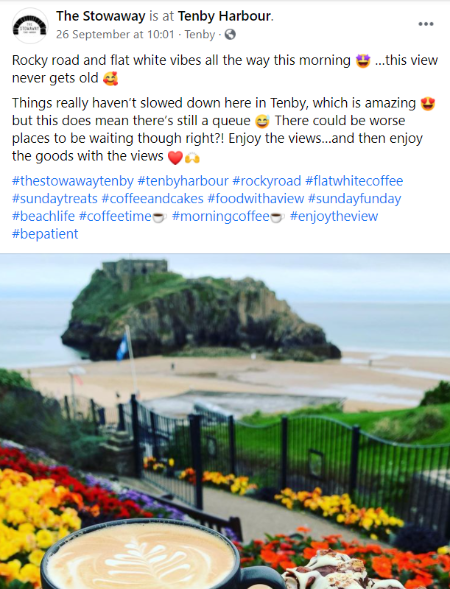
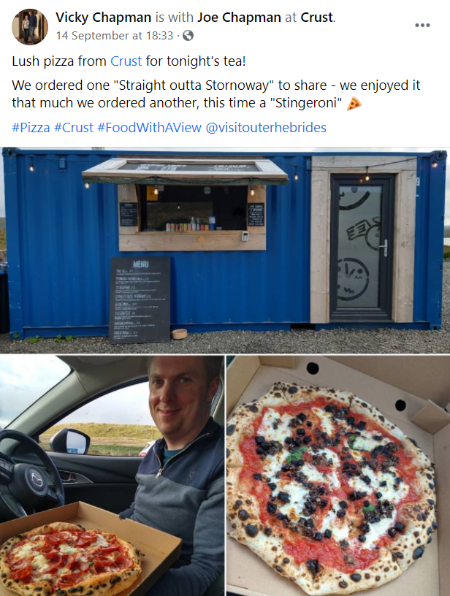
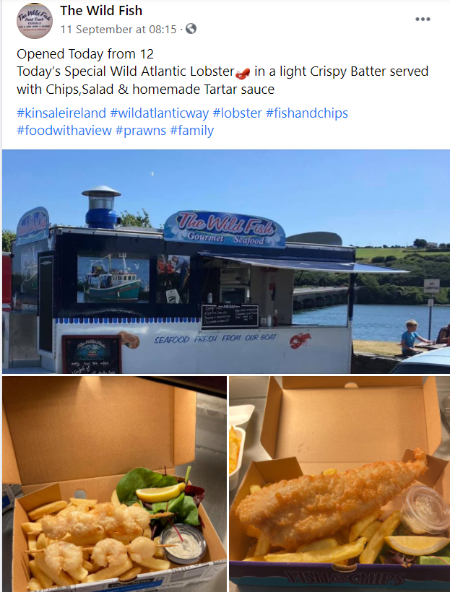
Regional Food & Drink Award
Food with a view- has been nominated for an Excellence Award in the category Regional Food & Drink Award. The celebration took place on 8 September 2022 at Edinburgh International Conference Centre (see pictures).
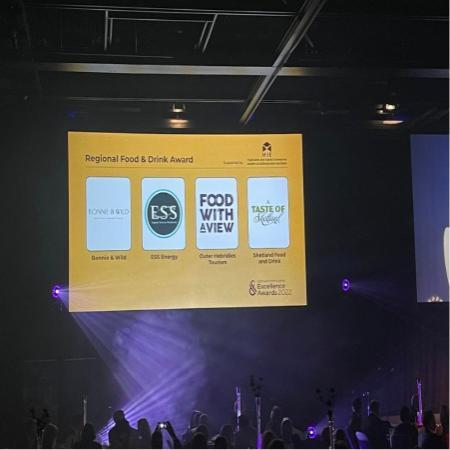
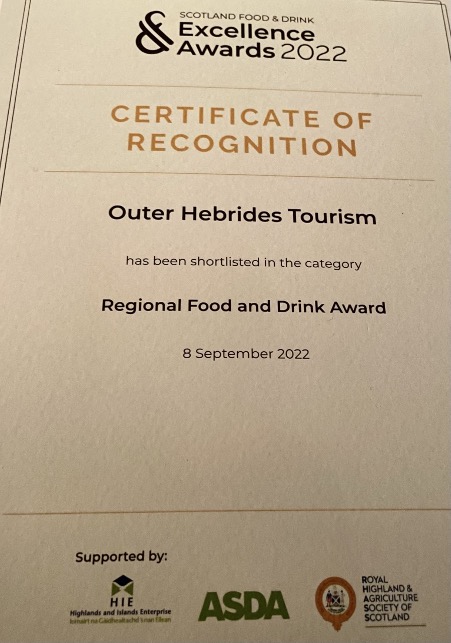
Case study: A Taste of the Outer Hebrides
After the successful ‘Food with a view’ campaign we have started a new one ‘A Taste of the Outer Hebrides’ where we focus on the local community to give consumers a taste of what there’s to discover, from must-visit restaurants to local produce, crofters, the people and stories behind the plate/drink Well, the islands have it all.
A Taste of the Outer Hebrides website: https://bit.ly/3e8uCiO
Case study: Wanlockhead Museum of Lead Mining
Background
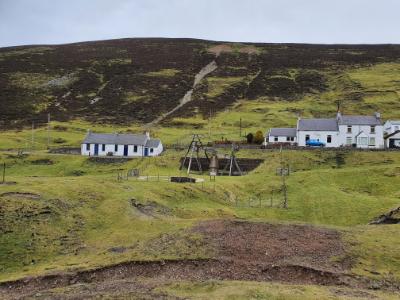
Wanlockhead Museum represents the local social and industrial history of this once important site of lead mining. The museum consists of an underground mine (open to the public); Straitsteps Cottages, representing miners’ lives in 1750, 1850 and 1910; the Miners’ Library and the Visitor Centre; and the Museum. The library holds 2800 books and is the second oldest subscription library in Europe.
Challenge
Wanlockhead Museum were looking to develop an informed digitisation strategy. They have valuable resources in the library which could be more widely shared on a digital platform. Social distancing would be very difficult to undertake on the mine tour, but a virtual tour could widen their audience and increase access for those not physically able to enter the mine; and, with the inclusion of text, could also be accessible to the hearing impaired.
Solution
We were able to secure funding for the project that included ESRC (Economic and Social Research Council) Impact Acceleration Account funding from the University of Glasgow; allowing us to create and test digital marketing solutions for the Museum as well as being able to purchase the necessary equipment to do this.
In collaboration with filmmakers "Silly Wee Films" from Glasgow, a static scenes VR tour for the Wanlockhead’s Lead mine, Miners’ library, and Miners’ cottages was created.
Audio narrations for these VR scenes were created in collaboration with “The Big Light” podcast company from Glasgow.
A small pre-Christmas Facebook campaign was tested to facilitate donations to the Wanlockhead’s fundraiser, and to build social media following. It generated 18,000+ post engagements, and 1,575 link clicks. Facebook page following went from 2,300 to 2,700 potential visitors during that brief campaign.
A further campaign was launched before the reopening of the museum with the goal of increasing followers. Through it, the Facebook site gained around 500 new followers, going from an initial 3000 to 3500.
A student marketing project was executed with the University of Glasgow.
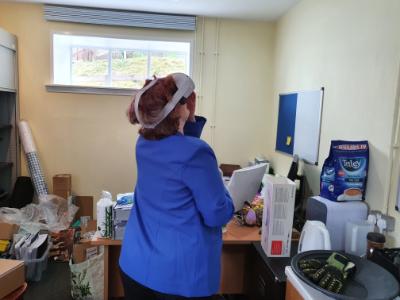
The staff received training in how to use a VR headset through an on-site visit. The Oculus headset had the final VR tour made readily accessible through the browser. They also received instructional posters to help visitors with using the headset independently of the staff. Lastly, we helped them create a brand new Instagram page.
Final VR tour of the Lead Mining Museum
Full screen version of the tour
Text adapted from Wanlockhead Museum Case Study by Interface
Case study: Whithorn Trust
Background
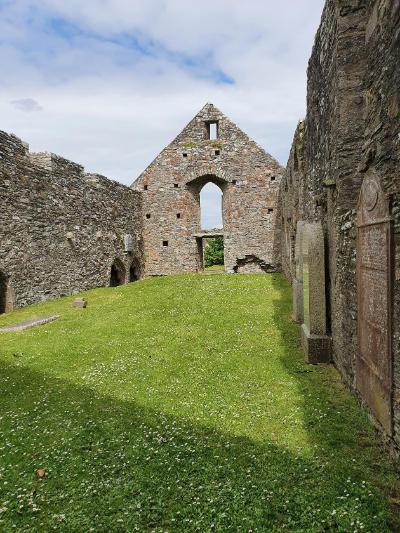
The Whithorn Trust was founded in 1988 to inspire the public with the story of Whithorn, which is one of the earliest sites in Scotland where archaeological evidence of Christian practice is found. The site was an early medieval monastery and later a pilgrimage shrine. The Trust operates a visitor centre; museum; guided tours, including its full-scale replica Iron Age Roundhouse; and a café and shop to support its activities. It also promotes wide ranging economic development and educational initiatives, working with bioarchaeologists on dating and population information for the early burials.
Challenge
The Whithorn Trust was interested in working on virtual reality. They already work with archaeologists who are looking to produce an interactive archaeopuzzle with 3D models, but we have lots of resources where virtual reality experiences may be applicable.
Solution
Drs Cowan and Kostyk were able to secure funding for the project that included ESRC (Economic and Social Research Council) Impact Acceleration Account funding from both the Universities of Edinburgh and Glasgow that was used to fund filmmakers, post-production costs, podcasts and 3D headsets; enable the continuance of the collaboration; and support the creation and testing of digital marketing solutions.
In collaboration with filmmakers, Silly Wee Films based in Glasgow, a static scenes VR tour for the Whithorn Trust's Iron Age Roundhouse and Priory was created as well as a 360-degree video VR tour, which is in line with the Trust’s new digital ambitions. Audio narrations were developed in collaboration with The Big Light podcast company from Glasgow.
A Facebook campaign was designed and tested to facilitate the sales of the Whithorn Trust's "digital ticket" initiative and to build a larger social media following.
An additional student marketing project was also secured by the academics to look at improving the Trust’s general marketing activities for 2021.
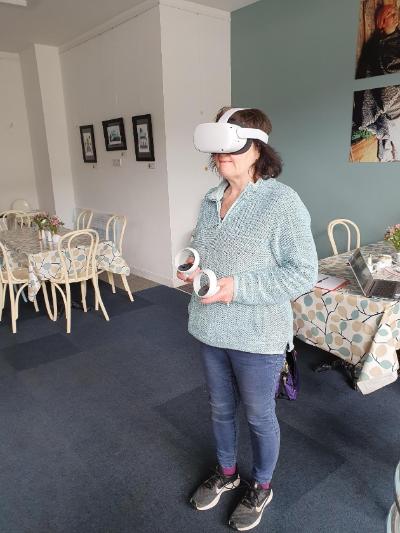
An on-site visit was done to train the staff in using a VR headset.
Final VR tour of the Whithorn Trust
Access full tour with sound here
Text adapted from The Whithorn Trust Case Study by Interface
Case study: Auchindrain Township
Background
Auchindrain is the most complete and well-preserved Highland farm township in Scotland. The major feature of Auchindrain is the 22 buildings and building remains of the township. Visitors can enter traditional family dwellings and animal enclosures, and view many unique artefacts of the bygone era, such as a large weaving loom constructed from bits of driftwood. The visitor centre also offers books, souvenirs, and local crafts.
Challenge
Auchindrain Township was looking to increase visitors’ experience on-site. They have already provided tourists with an interactive site map on a tablet or printed alternative. However, due to weaker GPS signals in sometimes adverse weather conditions, the electronic site map is not always working. A more interactive virtual tour could enhance visitors’ experience by increasing access to the rich heritage of the Township.
Solution
In collaboration with filmmakers "Silly Wee Films" from Glasgow, a static scenes VR tour for Auchindrain Township was created. We put some recognized collections items in the buildings and recruited some actors dressed up with the traditional Scottish dress, which will visually improve visitors' perception. The actors engaged in various traditional activities, such as churning butter and spinning wool, thereby ensuring temporal realism within each scene.
Audio narrations for these VR scenes were created in collaboration with Àdhamh Ó Broin from Scottish Gaelic Consultancy. All the audio conversations were recorded in the native Township Scottish Gaelic to enrich visitors experience.
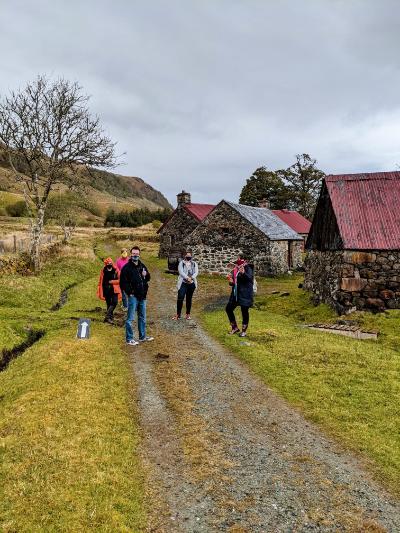
Project team commenced their work with the Auchindrain Township to produce their first on-site VR experience.
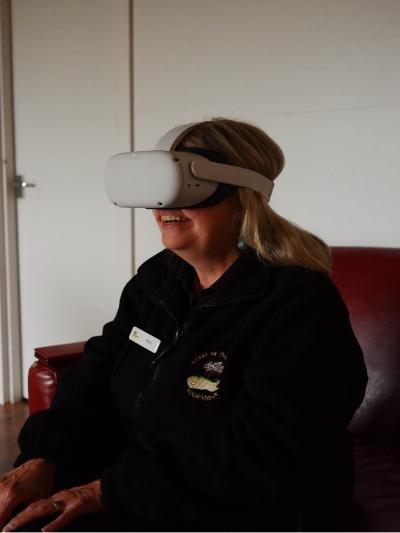
An on-site visit was done to train the staff in using a VR headset.
Final VR tour of the Authindrain
Access full tour with sound here
Case study: St Giles Cathedral
Background
Founded in 1124 by King David I, St Giles' Cathedral is the Church of Scotland's principal place of worship. With its famed crown spire, it stands on the Royal Mile between Edinburgh Castle and the Palace of Holyroodhouse. The most noteworthy part of the church is its magnificent stained-glass windows which flood the cathedral in a pleasant light. St Giles attracts visitors from around the world to visit and experience music, art and history within its walls.
Challenge
St Giles' Cathedral was interested in working on virtual reality to increase visitors’ experience. While the existing audio guide offers visitors informativeness in terms of the building, revealing secrets and stories about St Giles, virtual reality can improve the entertainment and interaction of visitors during their visit. In addition, some of the areas of St Giles' Cathedral are normally inaccessible, but virtual tours can increase access to those places.
Solution
In collaboration with expert filmmaker Andrew Murchie from Deep Vision Studios, a 360° 3D at 8K resolution VR film for St Giles' Cathedral was created. The VR film provides guests with access to areas which would normally be inaccessible and will provide some amazing, seldom seen 360 degree panoramic views from high up in the Edinburgh city centre in glorious stereoscopic 3D.
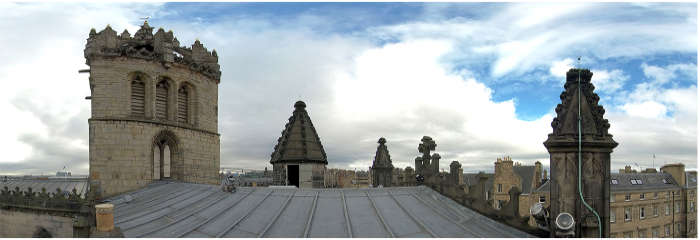
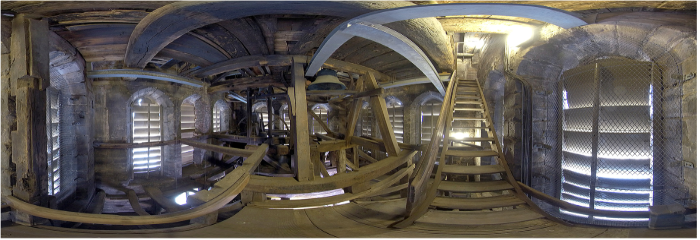
360 images for St Giles Cathedral
Workshop: Scottish Community Tourism (SCOTO) – Discover What The Metaverse Buzz Is All About
Time & Date:
11am, Friday 14 October 2022
Workshop Overview
The topic of the workshop is what the metaverse buzz is about. The 1.5-hour online workshop discussed what metaverse is and how to use mat averse in company marketing practices. Dr Alena Kostyk focused on what exactly is “Virtual Reality” and how it can be used for community tourism marketing? In particular, implications for community-based conservation and promoting a community’s natural and cultural heritage.
Marketing practitioners involved in marketing and development and interested in expanding access to cultural heritage projects attended the workshop.
Workshop: Scottish Community Tourism (SCOTO) – Visual Engagement on Social Media
Time & Date:
11am, Friday 7 October 2022
Workshop Overview
The topic of the workshop is the effective use of Photography on Social media. The 1.5-hour online workshop discussed the effective use of photography on social media. Dr Jaylan Azer considers how different types of photographs can be used on social media pages to grab the attention and increase the engagement of the tourism community, including visitor, other business owners, locals, and stakeholders.
Marketing practitioners involved in their organisation's marketing and social media attended the workshop.
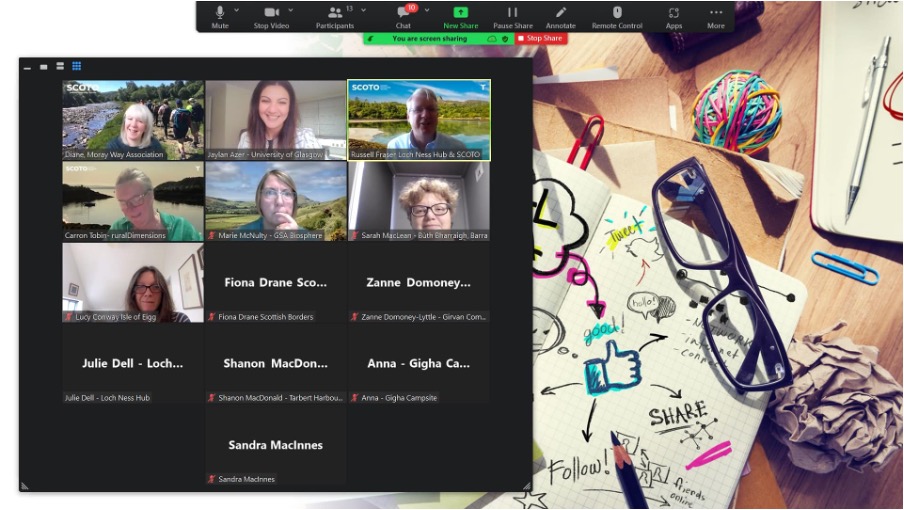
The SCOTO Zoom workshop

